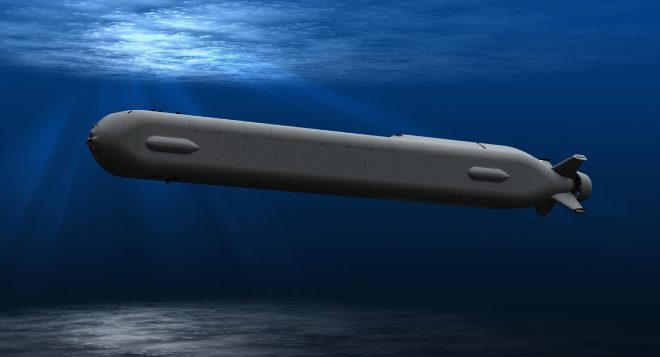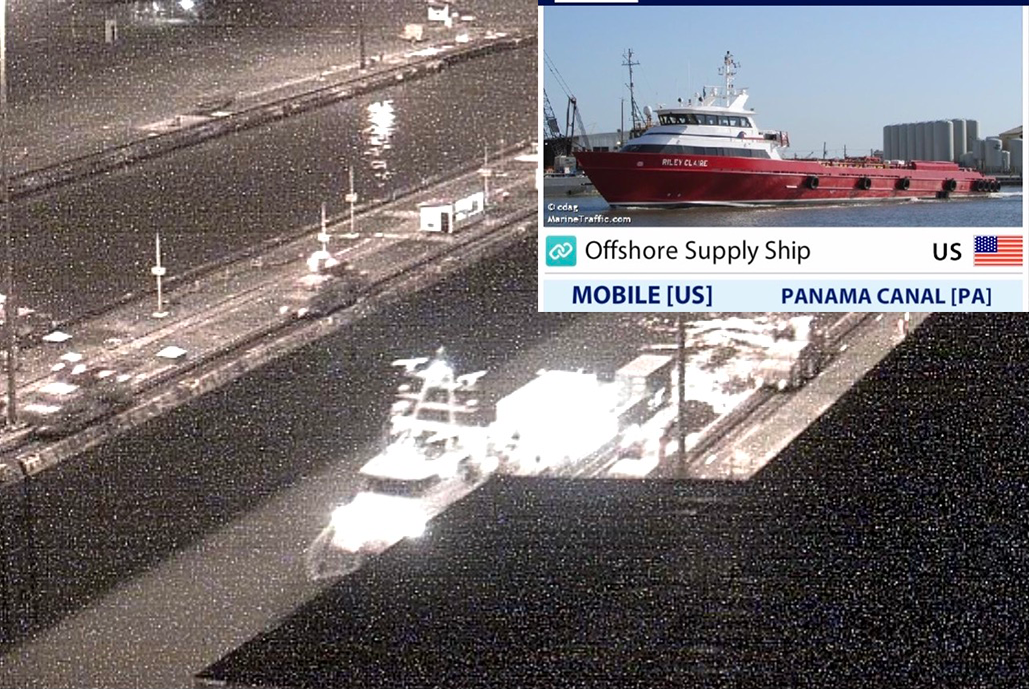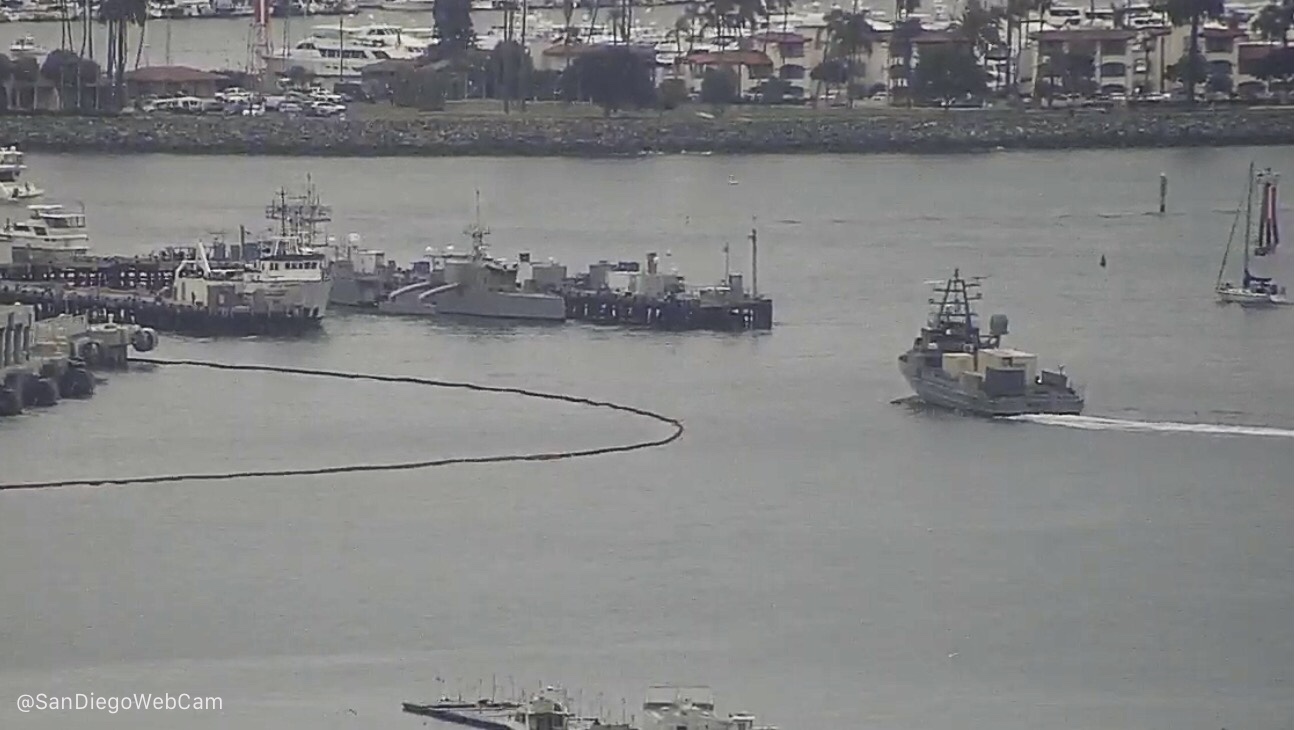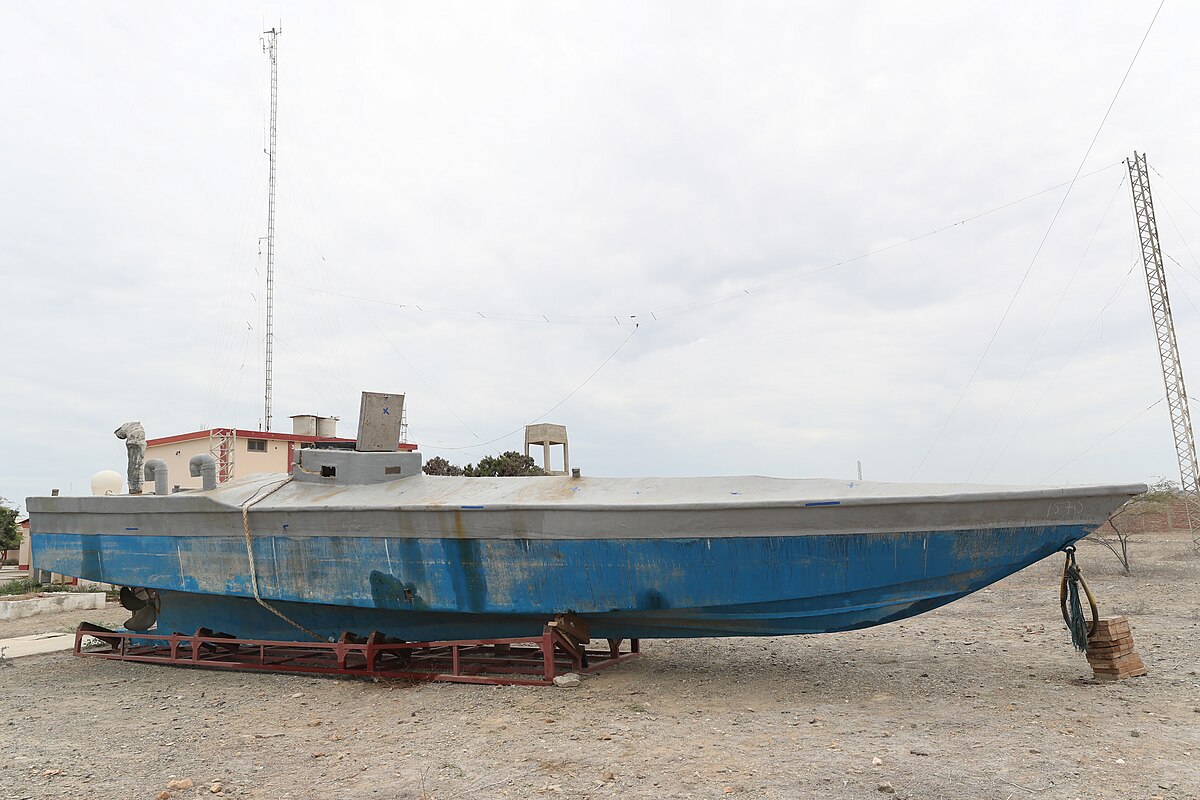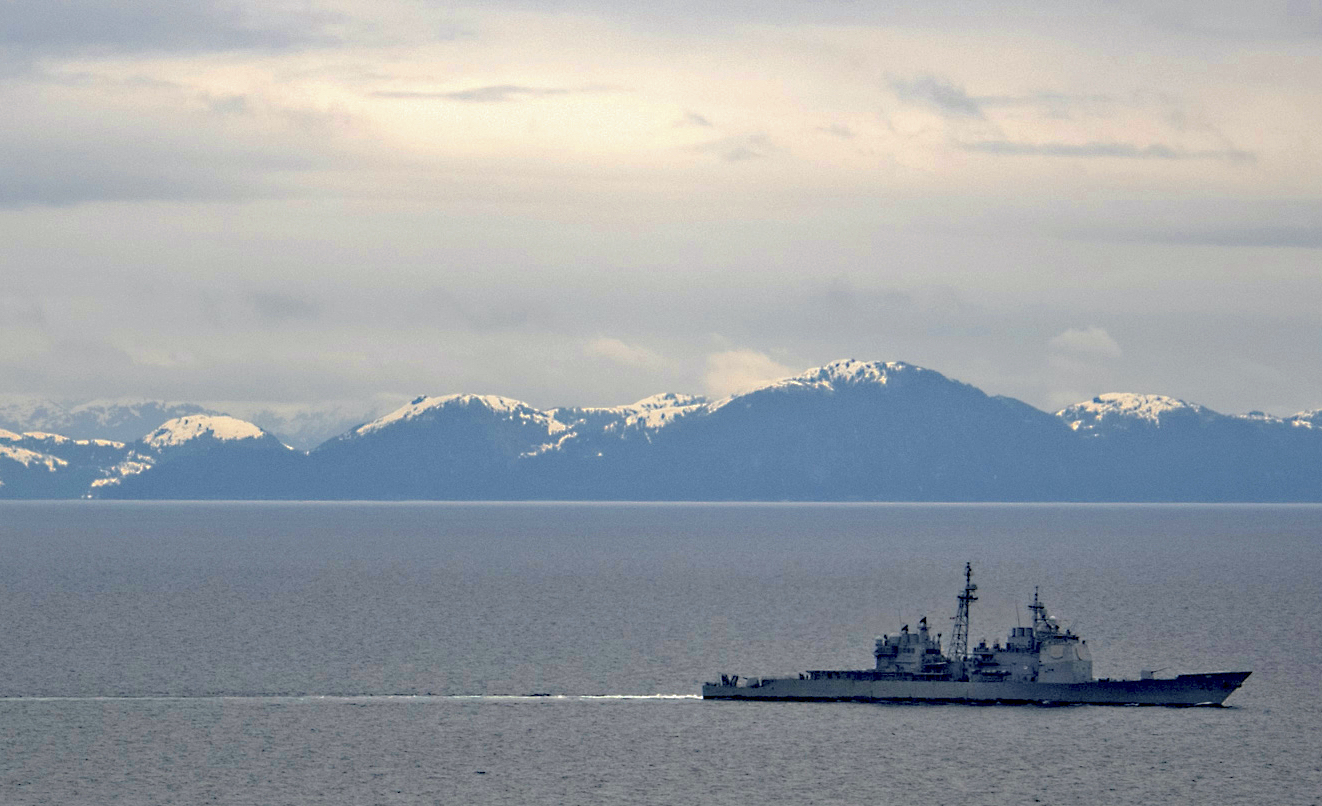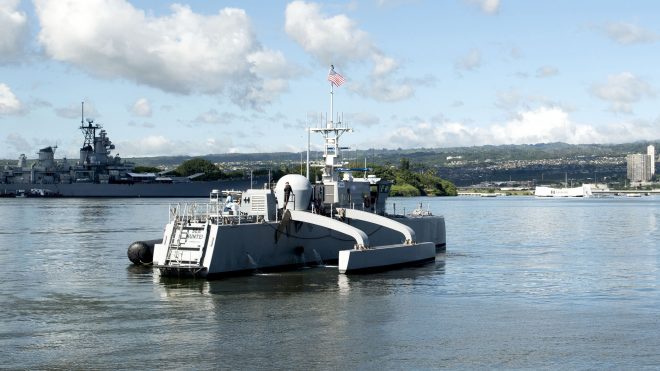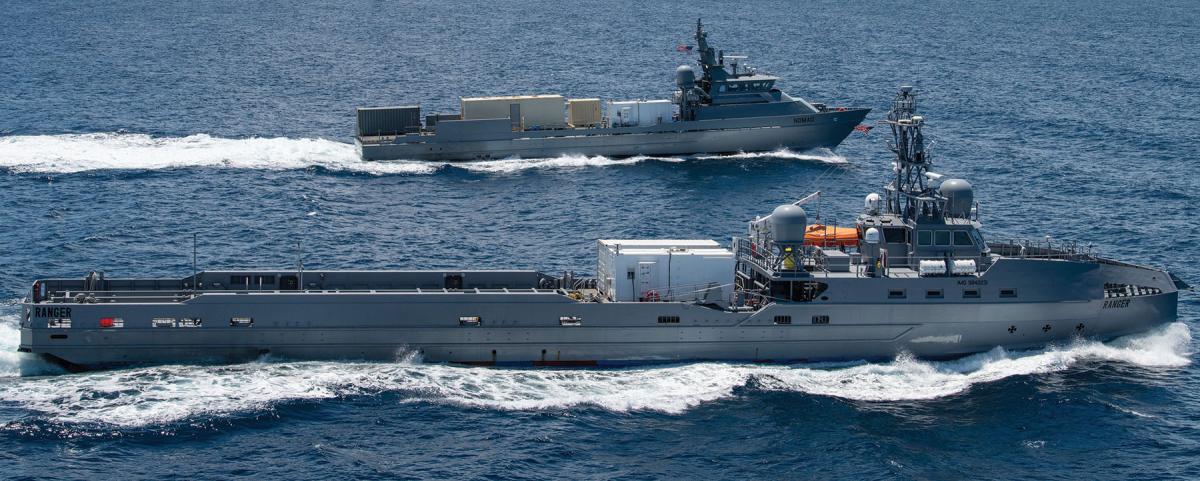- Joined
- 9 October 2009
- Messages
- 21,979
- Reaction score
- 13,640
First directly mentioned on SPF back in 2017:
Most recent development:
https://news.usni.org/2019/03/13/navy-wants-ten-ship-3b-unmanned-experimental-ghost-fleet
Likely related in some way to the CARACaS program.
bring_it_on said:Pentagon proposes converting existing vessels into 'Ghost Fleet' and other new FY-18 projects
The Pentagon is seeking funding for a new "Ghost Fleet" project in fiscal year 2018 to launch a prototype, unmanned maritime naval force to fulfill existing combatant commander requirements, one of nine new-start projects the secretive Strategic Capabilities Office seeks in its $1.1 billion FY-18 research and development spending request.
The new FY-18 projects seek $430 million in funding and, if enacted, would expand the portfolio of ongoing technology prototype efforts managed by the SCO to more than two dozen in an effort to outfit U.S. forces with disruptive capabilities by establishing new and unconventional uses of existing systems and near-term technologies.
The SCO, created in 2012 and established last fall as a permanent Defense Department entity, focuses on projects with the potential to bolster conventional deterrence and power projection capabilities against great powers such as China and Russia and find new ways to create surprise and demonstrate overmatch capability.
The Ghost Fleet project is the single largest FY-18 SCO new start, with a proposed $206 million budget.
"SCO will develop and demonstrate fleet integrated, operational prototype unmanned maritime vehicles to fill existing mission requirements for Combatant Commanders," the budget request states. The funding would be used to "build and evaluate unmanned capabilities to support future operational demonstrations" and to begin payload integration efforts.
The Ghost Fleet prototypes "will include platforms, autonomy, command, control and communications and payload integration," the request adds.
"Because of their high-value sensors, weapons, and most importantly people, naval ships must be heavily defended," SCO Director William Roper told the Senate Appropriations defense subcommittee on May 3. "Partnering with the Navy, SCO is converting existing vessels into autonomous, collaborative 'ghost fleets' . . . capable of dangerous missions without putting critical ships at risk," according to Roper's written testimony that foreshadowed the FY-18 budget request.
The second-largest FY-18 request for a new-start project is to create a secure tactical communications network for ground forces operating in anti-access, area-denial environments, an effort called "LiTE Saber." The SCO is seeking $65 million in FY-18 to "develop and demonstrate a commercial-enabled" communications network and use the funding to "establish candidate operating environments" and "conduct analysis to define system characteristics and effectiveness," according to the budget request.
The "Breaker" project is another FY-18 new-start, seeking $47.7 million for a demonstration to integrate "existing systems to provide combatant commanders with long range, surface- and air-delivered area effects," according to the budget request. The Breaker project "will demonstrate the feasibility and utility of launching this modified weapon from existing fires launchers," according to the request. The effort aims to retire risks associated with integrating the candidate munition into an unidentified existing weapon system, including modifications to increase munition lethality, according to the budget request.
FY-18 funding would be used to determine the munition integration design, conduct planning for integration into existing fire launchers, conduct ground-based tests and continue mission analysis for evaluating capability across multiple mission areas, according to the request.
Another project, the "Motley Crew," is an FY-18 new-start seeking $32 million to "leverage near-term technologies being developed to enable interoperability between weapons," according to the budget request. "Motley Crew will enable collaboration among existing weapons to enhance capabilities [in] anti-access/area-denial environments," the budget request states.
In a project similar to Ghost Fleet, the SCO is partnering with the Air Force in a new FY-18 project called "AVATAR" to incorporate expendable unmanned aircraft with fighter aircraft formations to allow pilots to control the drones from a safe, standoff distance. The Pentagon is seeking $25 million for AVATAR in FY-18. "SCO will convert manned aircraft and target drones to avatars in order to develop enhanced combat capabilities," the budget request states.
The "Hornet's Nest" project, also an FY-18 new start, requires $24 million to begin work to "develop a multi-mission Unmanned Aerial Vehicle (UAV) capable of launch from manned/unmanned rotary and fixed wing aircraft and ground systems," according to the budget request.
"MAVEN" is another FY-18 new-start, seeking $16 million to "leverage advanced commercial technologies to provide advantage to the warfighter in contested environments," according to the request.
"Vanguard" is seeking $8.5 million in FY-18 as a new-start to "provide a capability to detect and track troop and motorized unit movements across the battlefield," and "StormSystem" is also a new start seeking $7 million to "leverage existing capabilities to develop a suite of tools that disrupts the adversary cyber network exploitation," according to the budget request. "This effort will provide low-cost, at-scale obfuscation capabilities to government and industrial base research and development networks."
Most recent development:
https://news.usni.org/2019/03/13/navy-wants-ten-ship-3b-unmanned-experimental-ghost-fleet
Likely related in some way to the CARACaS program.

